Although this may not be a very common issue, it is very concerning for dog owners to notice a growing black stain over their dog’s eyelid.
It may be downright frightening when the veterinarian suggests the possibility of cancer and recommends expensive biopsies. Is that really necessary?
Are there other possible causes of this black stain?
While cancer is a possibility and a biopsy is sound advice, there are actually several possible reasons for a dog to develop an enlarging black stain over its eyelid.
Although the contents of this article may come as a relief for some dog owners, it is still advisable to have your dog’s eyelid checked by a licensed veterinarian to obtain a definitive diagnosis.
Growing Black Stain in a Dog’s Lower Eyelid
Melanoma can indeed cause a growing black stain on a dog’s lower eyelid, but porphyrins in your dog’s saliva and tears can also cause this as well. Pigmentary Keratitis is another cause of this dark discoloration, but your dog may have met a mishap causing its eye to become bruised and irritated.
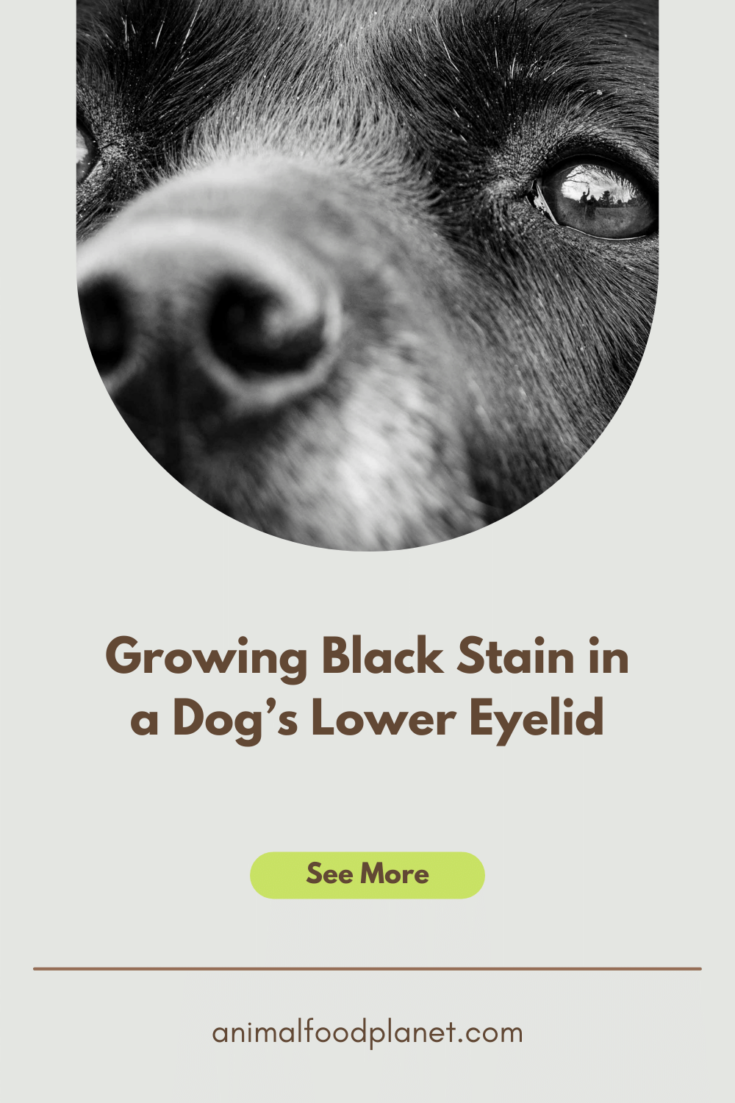
Growing Black Stain in a Dog’s Lower Eyelid
Melanoma Can Cause a Black Spot on a Dog’s Eyelid
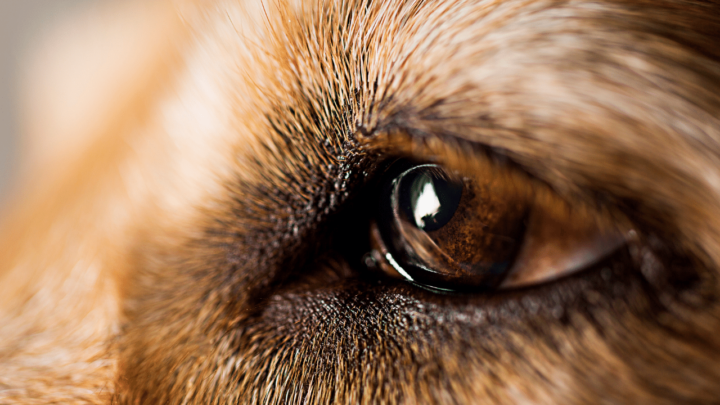
Dark spots in a dogs eye can be a sign of a melanoma
This is the last thing that a dog owner wants to hear, but it is the truth. Your furry pal may have cancer.
However, melanoma tumors usually grow on the iris, which is a part of the inner eye, instead of growing on the dog’s eyelid.
When a dog has melanoma in their eye, they will grow raised, dark-colored, and have circular lesions on their iris.
Although you may be breathing a sigh of relief right now, if your veterinarian has ruled out other possible causes of the discoloration, it may still be wise to go forward with the biopsy, as cancer can be unpredictable.
Porphyrins Can Naturally Cause Discoloration Around a Dog’s Eye
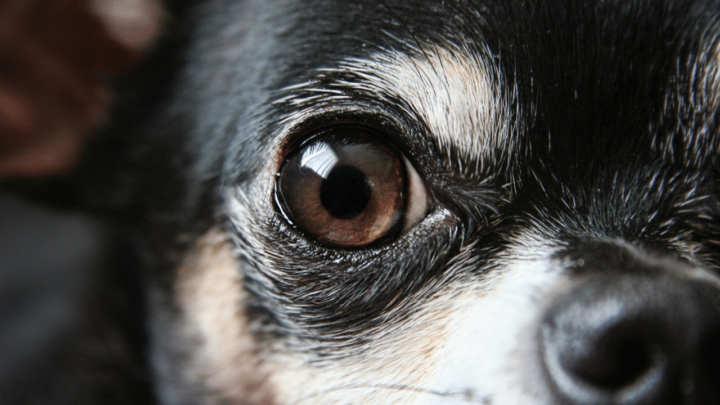
Porphyrins in older dogs are harmless
And this is perfectly normal. It may very well be one of the best-case scenarios, and it’s entirely plausible.
This discoloration usually occurs in older dogs and is most easily noticed in dogs with lighter-colored fur. Porphyrins are chemicals that are naturally contained in a dog’s saliva and tears.
A dog’s fur will eventually turn black or brown in areas where there has been prolonged and repeated contact with saliva or tears, such as around a dog’s eyes or mouth.
While it is absolutely normal for a dog to develop dark stains around their eyes as they age, they should still be evaluated by a veterinarian.
Pigmentary Keratitis Can Cause Discoloration Around a Dog’s Eye
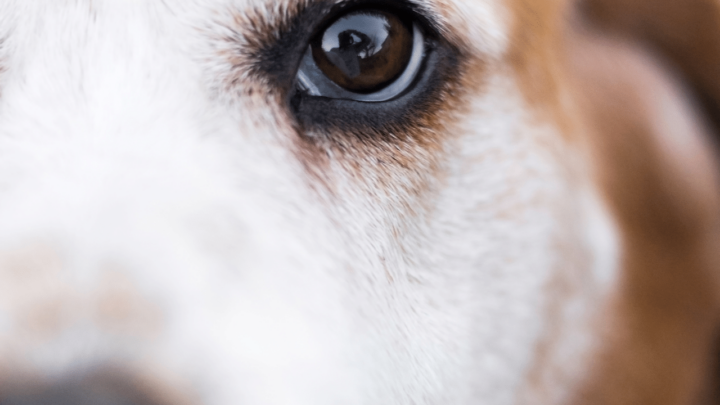
Pigmentary Keratitis can be another reason for discoloration
OK, so this is a fancier term than melanoma, so let’s break this down. Pigmentary Keratitis is an eye condition in dogs that prolonged inflammation brings about.
Simply put, if your dog’s eye has been chronically irritated, they could eventually develop a dark discoloration on their eye’s surface. And yes, Pigmentary Keratitis can affect your dog’s eyelid.
However, Pigmentary Keratitis is most commonly seen in Bulldogs and Pugs, so this explanation may be ruled out based on your dog’s breed.
While Pigmentary Keratitis isn’t harmful in and of itself, it is usually a byproduct of more serious, underlying eye conditions, unless it is merely the result of genetics alone.
Injuries May Cause Discoloration and Irritation
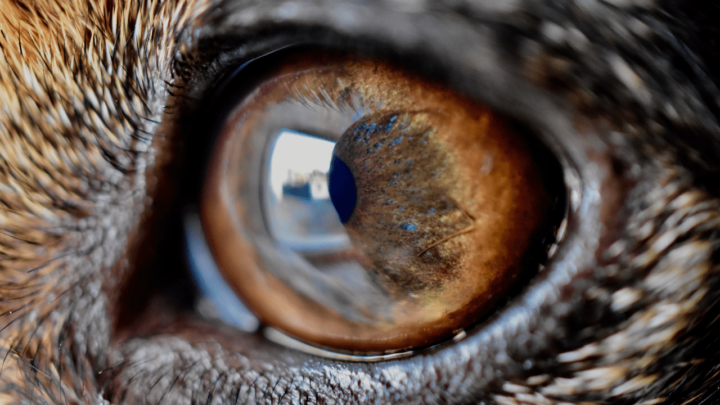
Injuries can cause eye discoloration
This may have been your initial thought when you first noticed the black stain appearing on your dog’s eyelid. And yes, it is a possibility.
Just as humans bruise when they are injured and those bruises change over time, a dog can show signs of injury as well.
It’s unlikely that the dark stain is a bruise, but if your dog ran into a tree branch, for instance, it could cause eye irritation that could outwardly manifest itself as a black stain.
While you may be feeling a little hopeful right now, your dog isn’t out of the woods yet.
Even though this is indeed a possible explanation, it is not a very likely one.
Another possibility is that the stain could be a birthmark that has grown over time and was previously unnoticed, but the bottom line is that you still need to consult a veterinarian and express your concerns to them.
Frequently Asked Questions about Growing Black Stain in a Dog’s Lower Eyelid
Why are my dog’s tear stains black?
Your dog may be producing a large amount of porphyrins, which are molecules that contain pigmentation. These molecules naturally occur in dog saliva and tears. Once these molecules have been exposed to the sun, they can turn black.
What does a black spot in a dog’s eye mean?
Well, it could be melanoma, but it could also mean that the dog is developing a condition that is known as iris atrophy, which often occurs in older dogs or could be the result of glaucoma.
How do I know if my dog’s eye injury is serious?
If your dog won’t let you anywhere near their eye, that could mean that they are in pain and the injury may be more serious than it looks. Also, if the eye is discolored, bleeding, or producing discharge, you should take your dog to a veterinarian as soon as possible.
Conclusion
You probably already know that you can search for any health condition on the web and come up with a variety of explanations, but the only sure way to know what is causing the black stain on your dog’s lower eyelid is to have them checked by a veterinarian.
While these are all possible causes of discoloration in a dog’s eye, the only true relief that you will find will come in the form of a definitive diagnosis.


